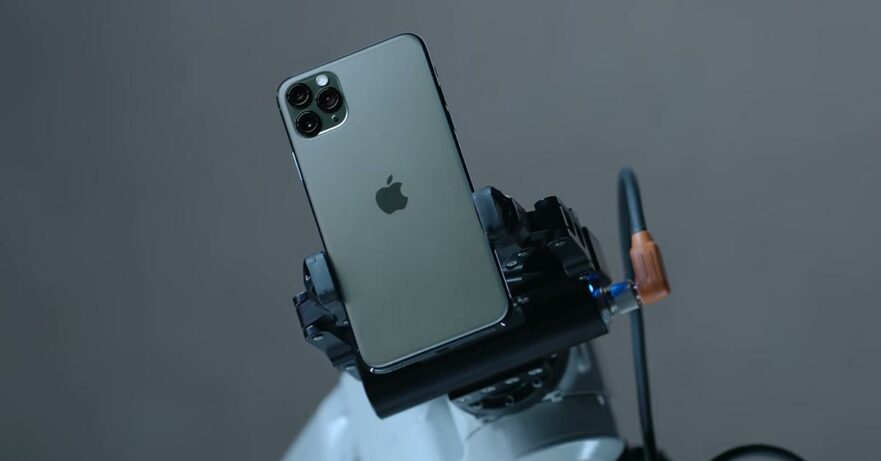Apple today launched the successors to the iPhone XS and iPhone XS Max, alongside the iPhone 11 and a bunch of other new products and services to keep you happy within the U.S. tech giant’s walled garden.
(Update, October 9: Prices in the Philippines are up! See Just in: iPhone 11 series PH prices revealed.)
(Update, October 4: Finally, some info for the Philippines! Read Apple iPhone 11 series PH availability revealed.)
The iPhone 11 Pro and iPhone 11 Pro Max are, as Apple claims, aimed at those who want the “most sophisticated technology” and look to be substantial upgrades from the flagship iPhones a year before.
READ ALSO: iPhone 11 now official. See its prices, specs, release date
But although they look similar to their predecessors, these Pro models come with a textured matte finish, as opposed to slippery and hard-to-keep-clean glass and a third camera, along with several improvements on the hardware front.
iPhone 11 Pro and iPhone 11 Pro Max release date and prices
The Apple iPhone 11 Pro and iPhone 11 Pro Max will be available in the United States, Puerto Rico, the U.S. Virgin Islands, and more than 30 other countries and regions from September 20, with preorders going live September 13th.
Picking up where last year’s flagship iPhones left off, the iPhone 11 Pro will start at $999 (around P51,993), and the iPhone 11 Pro Max will get a starting price of $1,099 (P57,198), with 64GB, 256GB, and 512GB storage variants for both. Gold, gray, green, and silver are your color options. See details below:
- Apple iPhone 11 Pro 64GB: $999 (P51,993)
- Apple iPhone 11 Pro 256GB: $1,149 (P59,806)
- Apple iPhone 11 Pro 512GB: $1,349 (P70,216)
- Apple iPhone 11 Pro Max 64GB: $1,099 (P57,198)
- Apple iPhone 11 Pro Max 256GB: $1,249 (P65,011)
- Apple iPhone 11 Pro Max 512GB: $1,449 (P75,421)
Last year, customers in the Philippines were able to get their hands on the iPhone XS and iPhone XS Mas in October. We expect that to be the case in 2019, too.
iPhone 11 Pro and iPhone 11 Pro Max specs and features
On the front, the Apple iPhone 11 Pro features a 5.8-inch, 2,436 x 1,125 Super Retina XDR OLED screen, which is much smaller compared with the iPhone 11 Pro Max’s 6.5-inch panel.
Both have HDR10+ support, a 2-million-to-1 contrast ratio for deeper blacks and 1,200 nits of brightness, meaning they’re super bright, and you can use them under direct sunlight without straining your eyes. Apple claims they’re 15% more energy-efficient as well, while the glass on the display is said to be the toughest ever on a smartphone.
Apple iPhone 11 Pro and iPhone 11 Pro Max: Official video
Besides the new triple-lens camera module and a matte finish on the case, the iPhone 11 Pro and iPhone 11 Pro Max retain the stainless-steel frame and wide notch housing Apple’s Face ID hardware at the top. The IP68 rating means the new iPhones are rated for immersion in water as much as two meters deep for up to 30 minutes.
There’s a new A13 Bionic chipset inside, which has the fastest CPU and GPU in a phone, at least according to Apple. The A13 Bionic is paired with 4GB RAM and has a third-generation neural engine for a smarter Siri and improved camera capabilities, including the ability to take handheld night shots.
SEE ALSO: Apple iPhone XR bestselling phone in 1st half of 2019 — report
With improvements to efficiency, the Apple iPhone 11 Pro and iPhone 11 Pro Max are expected to last much longer than their predecessors — up to four and five hours better battery life on the Pro and Pro Max, respectively. And, at last, these iPhones will come with fast charging right out of the box, courtesy of an 18-watt power brick that ships with the handsets.
iPhone 11 Pro and iPhone 11 Pro Max cameras
Starting with the front camera, Apple has upgraded the selfie shooter of the iPhone 11 Pro and iPhone 11 Pro Max to a 12-megapixel camera with the same Portrait Lighting feature from last year. It now does 4K video recording at up to 60 frames per second, and, for the first time as well, 1080p slo-mo at 120fps.
Another iPhone first: The two models have a triple-camera setup, with 12-megapixel sensors behind standard, wide-angle, and telephoto lenses. Optical image stabilization is available with the primary and telephoto cameras only; the ultra-wide camera has electronic image stabilization built in, though.
READ ALSO: Top 10 smartphone brands in Q2 2019
In addition to a dedicated night mode, a new camera feature coming in a future software update is Deep Fusion. It shoots nine images quickly and uses machine learning to combine them into a single final image with greater detail and less noise.
iPhone 11 Pro vs iPhone 11 Pro Max: Specs and price comparison

Share this Post



